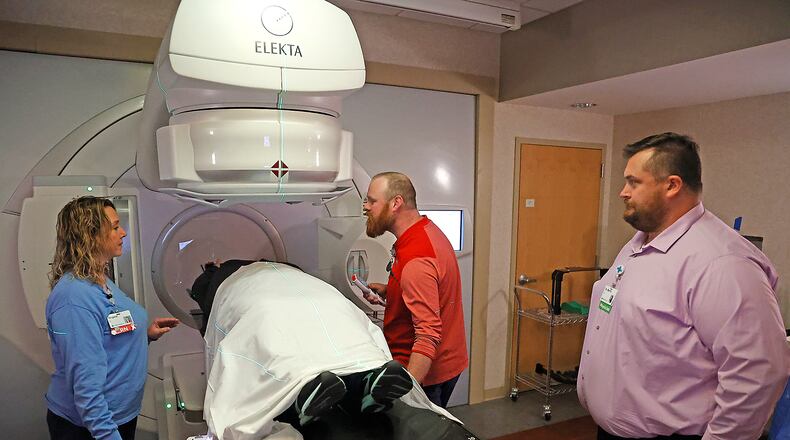Lung and bronchus cancer was the leading cause of cancer incidence and mortality in both counties, accounting for 17.8% of cancer cases and 29.3% of cancer deaths in Clark County compared to 15.6% of cancer cases and 29.0% of cancer deaths in Champaign County, ODH reported in 2021.
Mercy Health Springfield Cancer Center lung care coordinator and registered nurse Angela Wagner said the highest risk behavior for lung cancer is smoking, but those who don’t smoke may also be at risk for the disease if they have a family history of lung cancer, if they’ve had exposure to harmful substances through their work or living spaces and more.
Wagner lost her mother-in-law, Donna, to cancer in 2019, eight weeks after her late-stage lung cancer diagnosis. It was a shock to her family, as Donna was young and healthy, Wagner said.
“It just hit us like a ton of bricks,” Wagner said. “We weren’t expecting it, at all. And it was one of the hardest things our family had to go through.”
Wagner said her experience inspired her to advocate for early detection and the importance of screening for lung cancer.
Roughly 68% of lung and bronchus cancer cases are diagnosed in their late stages in Clark County. Champaign County is slightly higher at 69%.
Early stages of lung cancer often present no symptoms. Regular screening for lung cancer can help people detect the disease at its beginning. Early detection significantly increases the cure rate of cancer patients, Wagner said.
Lung cancer advocates also point to the necessity of screening.
Early detection is key to saving lives, but in Ohio, many are going without screenings, echoed Ken Fletcher, the advocacy director at the American Lung Association.
“We all can help reduce the burden of lung cancer in Ohio. If you are eligible for lung cancer screening, we encourage you to speak with your doctor about it,” Fletcher said in a statement. “If a loved one is eligible, please encourage them to get screened.”
Lung cancer screenings are low-dose CAT scans, where patients are lying on a table while a donut-shaped machine passes over them as it takes images of their lungs. The typical screening lasts between five to 10 minutes, Wagner said.
People who are between ages 50 and 80, are current smokers or have quit smoking within the last 15 years and have a “20-pack history” — on average, one pack per day for 20 years or two packs per day for 10 years — are eligible for lung cancer screenings.
Roughly 14.2 million Americans meet the requirements for screening, according to the American Lung Association.
For those who do receive a diagnosis, treatment options have expanded significantly over the past several years, Wagner said.
According to a new report by the American Lung Association, Ohio ranks among the best states for receiving treatment after a lung cancer diagnosis.
The Springfield Cancer Center, located at 148 W. Main St., has treatment options for early-stage and late-stage diagnoses.
A stigma often surrounds lung cancer, especially when an individual who smokes is diagnosed, Wagner said.
“No one deserves to get lung cancer. No one deserves to get any cancer,” Wagner said.
Resources exist for those who want to quit smoking, however. Mercy Health offers smoking cessation courses.
By the numbers
68: Percentage of lung and bronchus cases in Clark County diagnosed in their late stages
40: Percentage of Ohioans who are diagnosed with cancer at some point in their lives
29.3: Percentage of cancer deaths in Clark County that were related to lung or bronchus cancer
About the Author


